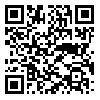Volume 29, Issue 8 (11-2021)
JSSU 2021, 29(8): 3976-3988 |
Back to browse issues page
Download citation:
BibTeX | RIS | EndNote | Medlars | ProCite | Reference Manager | RefWorks
Send citation to:



BibTeX | RIS | EndNote | Medlars | ProCite | Reference Manager | RefWorks
Send citation to:
Fatemi S F, Hashemvarzi S A, Farzaneh Hesari A. Protective effect of interval exercise training with different intensity and alpha-lipoic acid supplement on Nav1.3 protein in soleus muscle of diabetic rats. JSSU 2021; 29 (8) :3976-3988
URL: http://jssu.ssu.ac.ir/article-1-5344-en.html
URL: http://jssu.ssu.ac.ir/article-1-5344-en.html
Abstract: (1019 Views)
Introduction: Diabetes is a common metabolic disease, which leads to diabetic peripheral neuropathy. Peripheral neuron damage result in Nav1.3 elevations. Exercise training has beneficial role in diabetes management and peripheral neuropathy. Alpha lipoic acid (ALA) is a powerful biological antioxidant. However, the role of exercise training and ALA on Nav1.3 are not well understood. The aim of the present study was to investigate the effect of training with different intensity and Alpha lipoic acid supplement on soleus muscle Nav1.3 protein in rats with type 2 diabetes. Thirty-five male Wistar rats were randomly divided into seven groups: healthy control, diabetic, complementary diabetic, intensive exercise diabetic, moderate exercise diabetic, intensive exercise + supplemental diabetic, moderate exercise + complementary diabetic.
Methods: In this experimental study, 35 male Wistar rats were randomly divided into seven groups: healthy control, diabetic (D), complementary (alpha lipoic acid) diabetic (ALA), diabetic high intensity training (HIT), diabetic moderate intensity training (MIT), diabetes HIT+ALA (ALA + HIT), diabetic MIT + ALA (ALA + MIT). Rats were diabetic by intra-peritoneal injection of STZ. The HIT and MIT protocols were performed five days a week for six weeks. HIIT included 10 bouts of four minutes (running at 85–90% of maximum speed) and MIT 13 bouts of four minutes (running at 65–70% of maximum speed). ALA was administered orally 20 mg/kg once a day by gavage. Nav1.3 protein levels were measured by immunohistochemistry method. Statistical operations were performed with SPSS version 16 software. One-way analysis of variance and Tukey were used to analyze the data.
Results: The level of Nav1.3 increased significantly in diabetic group compared to the control (p≤0.0001). Moreover, HIT (p=0.0015), MIT p=0.0056), ALA+HIT (p≤0.0001) and ALA+MIT (p≤0.0001) decreased significantly Nav1.3 compared to the diabetic group.
Conclusion: HIT and MIT can reduce the expression of NaV1.3 in soleus muscle in diabetic rats. ALA combined with exercise training can be more effective to reduce diabetic neuropathy.
Methods: In this experimental study, 35 male Wistar rats were randomly divided into seven groups: healthy control, diabetic (D), complementary (alpha lipoic acid) diabetic (ALA), diabetic high intensity training (HIT), diabetic moderate intensity training (MIT), diabetes HIT+ALA (ALA + HIT), diabetic MIT + ALA (ALA + MIT). Rats were diabetic by intra-peritoneal injection of STZ. The HIT and MIT protocols were performed five days a week for six weeks. HIIT included 10 bouts of four minutes (running at 85–90% of maximum speed) and MIT 13 bouts of four minutes (running at 65–70% of maximum speed). ALA was administered orally 20 mg/kg once a day by gavage. Nav1.3 protein levels were measured by immunohistochemistry method. Statistical operations were performed with SPSS version 16 software. One-way analysis of variance and Tukey were used to analyze the data.
Results: The level of Nav1.3 increased significantly in diabetic group compared to the control (p≤0.0001). Moreover, HIT (p=0.0015), MIT p=0.0056), ALA+HIT (p≤0.0001) and ALA+MIT (p≤0.0001) decreased significantly Nav1.3 compared to the diabetic group.
Conclusion: HIT and MIT can reduce the expression of NaV1.3 in soleus muscle in diabetic rats. ALA combined with exercise training can be more effective to reduce diabetic neuropathy.
Type of Study: Original article |
Subject:
Exercise Physiology
Received: 2021/01/16 | Accepted: 2021/05/2 | Published: 2021/11/1
Received: 2021/01/16 | Accepted: 2021/05/2 | Published: 2021/11/1
Send email to the article author
| Rights and permissions | |
 |
This work is licensed under a Creative Commons Attribution-NonCommercial 4.0 International License. |







